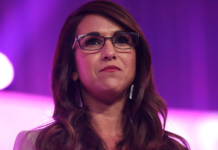The Trump administration released its long-awaited infrastructure plan on Monday.
Weighing in at 55 pages, it calls on lawmakers to craft legislation for a $1.5 trillion infrastructure package centering on public/private partnerships and heavy state and local government investments, reducing permitting processes to two years, investing in rural infrastructure projects, and promoting workforce training.
Trump stated in the White House document:
“My Administration’s plan addresses more than traditional infrastructure — like roads, bridges, and airports — but addresses other needs like drinking and wastewater systems, waterways, water resources, energy, rural infrastructure, public lands, veterans’ hospitals, and Brownfield and Superfund sites. The reforms set forth in my plan will strengthen the economy, make our country more competitive, reduce the costs of goods and services for American families, and enable Americans to build their lives on top of the best infrastructure in the world.”
But if that $1.5 trillion number sounds familiar, it should.
It is the amount Trump and the Republicans handed corporations and the wealthy after passing their tax overhaul in December that former President Barack Obama’s Treasury Secretary Jack Lew argues could “leave us broke.”
In other words, the tax breaks Republicans used to pay off their wealthy donors are exactly what we require to invest in our nation’s crumbling infrastructure.
Upon the plan’s release, the Democratic National Committee stated in an email to reporters:
“After repeatedly failing to live up to his infrastructure promises, the release of Trump’s infrastructure plan today once again falls short. Trump’s plan is just another giveaway to corporations and wealthy developers at the expense of American workers, and it fails to address some of the most pressing infrastructure needs our country faces.”
So where are we going to get the money?
Trump proposes putting down $200 billion of federal seed money to raise the required funds over 10 years. Half the federal funds would go toward state and local government incentives for matching.
Of the $200 billion federal investment, a quarter would serve rural areas (that mostly vote Republican) for sewers, highways, airports, and broadband, favoring 14 percent of the population.
Major transit projects like the $13 billion Gateway project linking New York and New Jersey, and a $64 billion passenger rail system in California, are left to compete for remaining funds.
Martin Robins, founding director of Rutgers University’s Alan M. Voorhees Transportation Center in New Jersey, said:
“That’s a very clear message that urban America is not of very much consequence, and, ironically, it’s urban America that needs most of the infrastructure money.“
New Jersey Gov. Phil Murphy (D) stated:
“[The plan has] a lot of good words associated with it, but not a lot of coin. This is probably a fraction of what our state needs or, frankly, the country needs.”
An unnamed Democratic official with significant transportation experience commented:
“It looks to me like the Cato Institute or somebody opened the file drawer and took all of their hackneyed old ideas out and rolled them into one proposal. They’re half-baked. At the end of the day, they don’t serve the economic interests of the country.”
Some see the federal government’s paltry contribution as a means to punish states that lean predominately Democratic–“blue states,” states Donald Trump lost in 2016.
Gabriel Metcalf, president and CEO of San Francisco Bay area-based urban policy think tank SPUR, said:
“The Republican tax bill was specifically designed to extract wealth from places that vote Democratic and shift it to places that vote Republican, and so that makes it extremely difficult for us to self-tax to make up for the cuts that are coming from the federal government.”
Trump acknowledged his “reality TV” approach at the White House with various state and local officials, including Virginia Democratic Gov. Ralph Northam and some Democratic mayors, when he said:
“Let’s see how badly you want it. Because if you want it badly, you’re going to get it. And if you don’t want it, that’s OK with me too.”
The White House is not sure from where its $200 billion contribution will come. During a briefing with reporters Saturday, an official confirmed the Trump administration has not ruled out raising the federal gas tax.
The unidentified White House official told reporters:
“There are some reductions in things like transit funding and TIGER grants, and things where the administration thinks that infrastructure funds haven’t been spent efficaciously.”
Transportation Investment Generating Economic Recovery (TIGER) is a popular program states and cities have used to promote transportation projects. New York City has spent TIGER funds on its Vision Zero effort to reduce traffic fatalities. New Jersey has used it for preparatory work to replace the Hackensack River bridge New Jersey Transit and Amtrak use to access New York City.
Democrats’ infrastructure plan calls for more direct federal investment, specifically $1 trillion in government spending.
Image credit: politico.com




